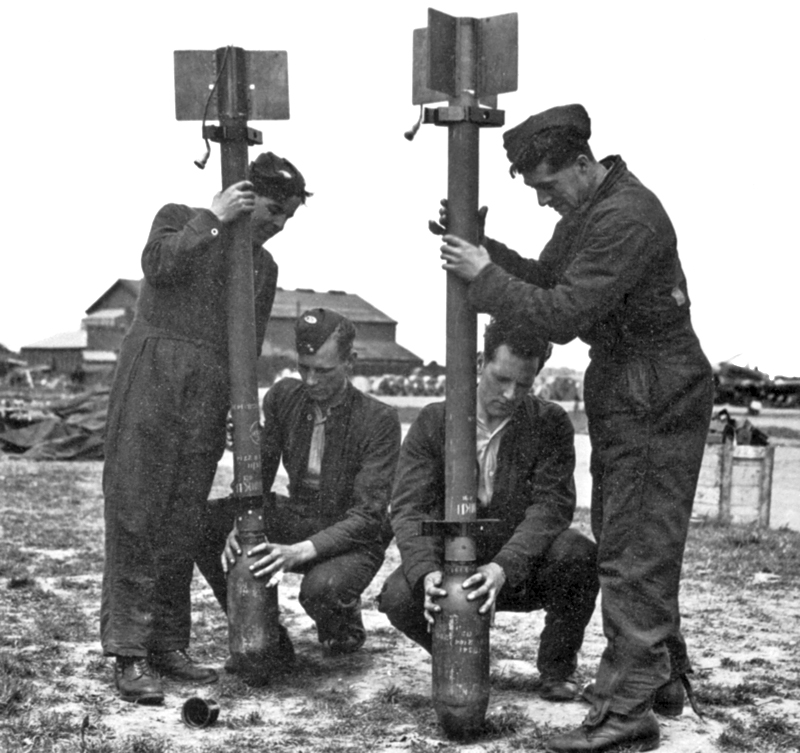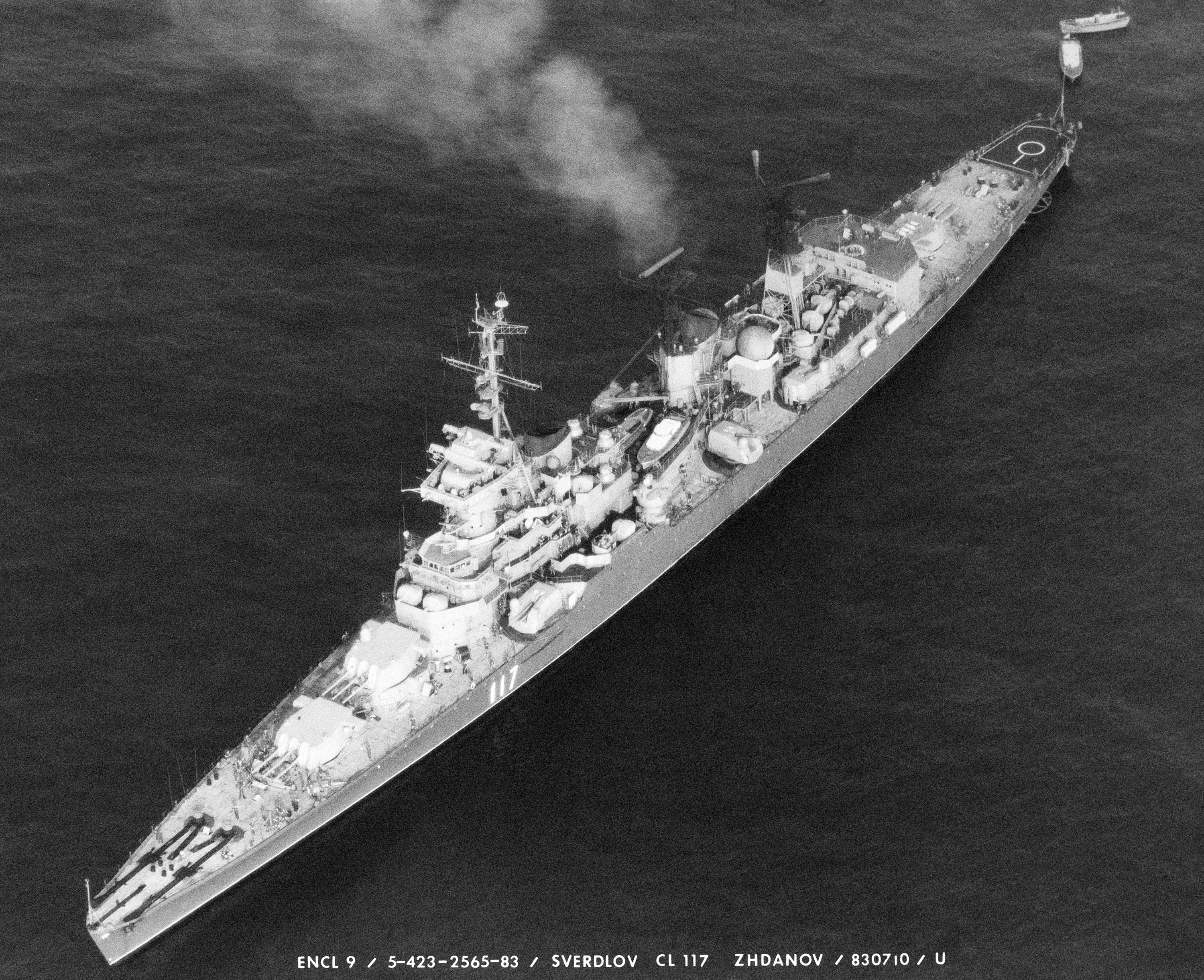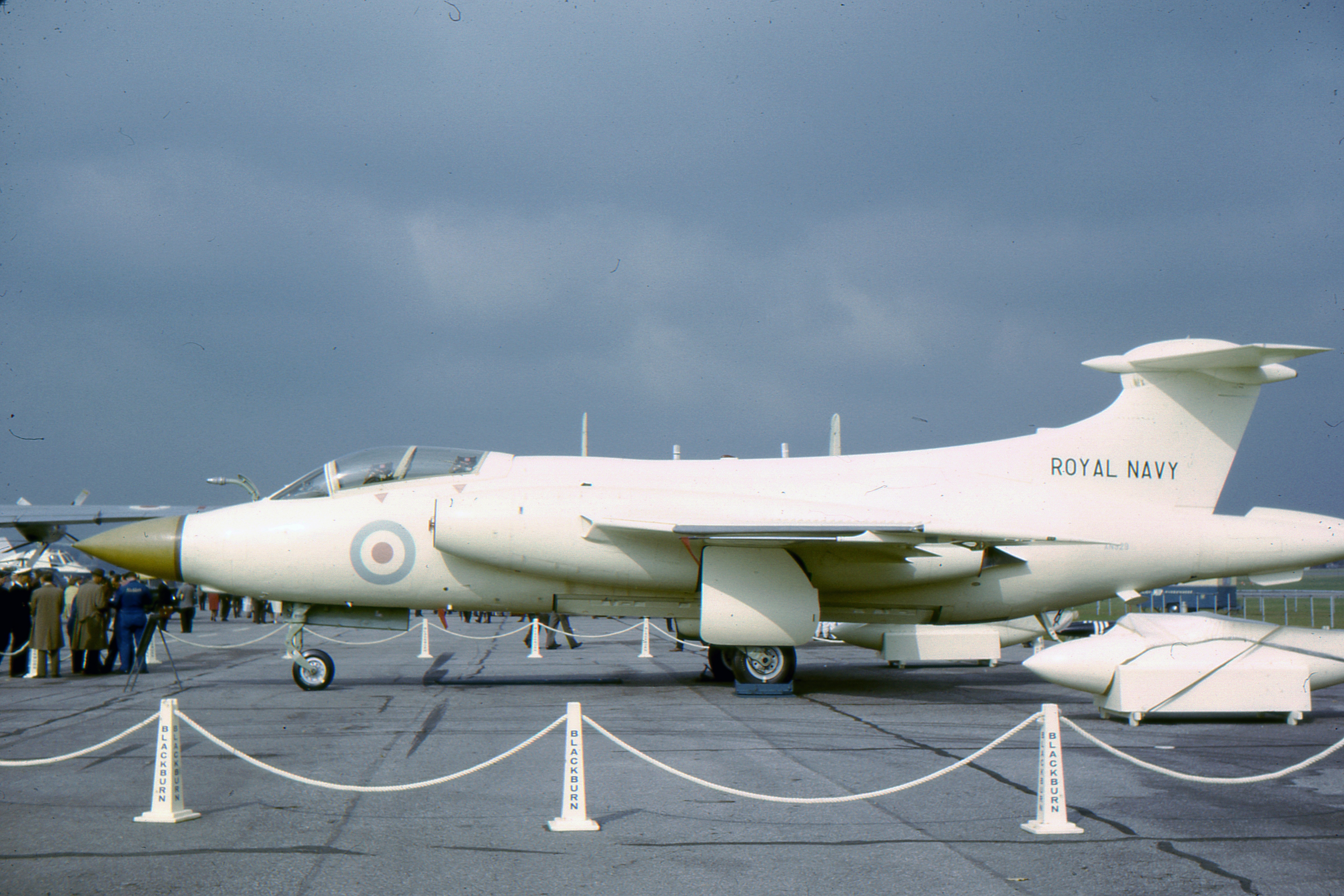|
Red Angel (rocket)
Red Angel was an anti-ship rocket developed for the Royal Navy. The name was one of the British rainbow codes. RP-3 ("Three-inch") rockets were used successfully for anti-shipping attacks during World War II. Larger unguided rockets were developed at the end of the war, such as the 'Uncle Tom' to meet Operational Requirement OR.1009. This used six of the three-inch (76 mm) rocket motors in a airframe of diameter. Around 1950 the new ''Sverdlov''-class cruisers caused concern in the Royal Navy, over the fear that the Soviet Navy was expanding into a wide-ranging blue water navy. A new weapon, Red Angel, was developed to meet this threat. This was larger than Uncle Tom and had a warhead intended to attack the deck armour of ''Sverdlovs''. A salvo of six hits was thought to be sufficient to disable a ''Sverdlov''. Red Angel was long and in diameter. Overall weight was with an warhead. Like Uncle Tom it had flip-out rear fins, but Tom's four large fins were replaced by six small ... [...More Info...] [...Related Items...] OR: [Wikipedia] [Google] [Baidu] |
Royal Navy
The Royal Navy (RN) is the United Kingdom's naval warfare force. Although warships were used by English and Scottish kings from the early medieval period, the first major maritime engagements were fought in the Hundred Years' War against France. The modern Royal Navy traces its origins to the early 16th century; the oldest of the UK's armed services, it is consequently known as the Senior Service. From the middle decades of the 17th century, and through the 18th century, the Royal Navy vied with the Dutch Navy and later with the French Navy for maritime supremacy. From the mid 18th century, it was the world's most powerful navy until the Second World War. The Royal Navy played a key part in establishing and defending the British Empire, and four Imperial fortress colonies and a string of imperial bases and coaling stations secured the Royal Navy's ability to assert naval superiority globally. Owing to this historical prominence, it is common, even among non-Britons, to ref ... [...More Info...] [...Related Items...] OR: [Wikipedia] [Google] [Baidu] |
Rainbow Code
The Rainbow Codes were a series of code names used to disguise the nature of various British military research projects. They were mainly used by the Ministry of Supply from the end of the Second World War until 1958, when the ministry was broken up and its functions distributed among the forces. The codes were replaced by an alphanumeric code system. History During WWII, British intelligence was able to glean details of new German technologies simply by considering their code names. For instance, when they heard of a new system known as ''Wotan'', Reginald Victor Jones asked around and found that Wotan was a one-eyed god. Based on this, he guessed it was a radio navigation system using a single radio beam. This proved correct, and the Royal Air Force was able to quickly render it useless through jamming. Wishing to avoid making this sort of mistake, Ministry of Supply (MoS) initiated a system that would be entirely random and deliberately unrelated to the program in any way, w ... [...More Info...] [...Related Items...] OR: [Wikipedia] [Google] [Baidu] |
RP-3
The RP-3 (from Rocket Projectile 3 inch) was a British air to ground rocket projectile introduced during the Second World War. The "3 inch" designation referred to the nominal diameter of the rocket motor tube. The use of a warhead gave rise to the alternative name of the "60-pound rocket". Though primarily an air-to-ground weapon, it saw limited use in other roles. They were generally used by British fighter-bomber aircraft against targets such as tanks, trains, motor transport and buildings, as well as by Coastal Command and Royal Navy aircraft against U-boats and ships. Use continued post-war, with the last known major operational use being during the Aden Emergency in 1964, where Hawker Hunters flew 642 sorties and fired 2,508 RP-3s in support of Radforce. Use continued until the withdrawal from Aden in November 1967, at which point the RP-3 was withdrawn from service in favour of the newer SNEB. Concerned about the possibility of shipboard radar setting off the SNEB's elect ... [...More Info...] [...Related Items...] OR: [Wikipedia] [Google] [Baidu] |
Operational Requirement
An Operational Requirement, commonly abbreviated OR, was a United Kingdom (UK) Air Ministry document setting out the required characteristics for a future (i.e., as-yet unbuilt) military aircraft or weapon system. The numbered OR would describe what intended role the aircraft would be used for, e.g., bomber, fighter, etc., or what type of weapon was required, e.g., gun, armament, bomb type, etc. In conjunction with any official specification, prospective manufacturers would then choose whether to design an aircraft or weapon for this particular requirement. Operational Requirements were carried over with the dissolution of the Air Ministry and the creation of the Ministry of Defence (MoD). Other requirements An Experimental Requirement (ER) was for an aircraft for research purposes; e.g., ER.100 in support of development of the English Electric Lightning. See also *List of Operational Requirements for nuclear weapons *List of Air Ministry specifications This is a partial ... [...More Info...] [...Related Items...] OR: [Wikipedia] [Google] [Baidu] |
Solid Rocket Motor
A solid-propellant rocket or solid rocket is a rocket with a rocket engine that uses solid propellants (fuel/oxidizer). The earliest rockets were solid-fuel rockets powered by gunpowder; they were used in warfare by the Arabs, Chinese, Persians, Mongols, and Indians as early as the 13th century. All rockets used some form of solid or powdered propellant up until the 20th century, when liquid-propellant rockets offered more efficient and controllable alternatives. Solid rockets are still used today in military armaments worldwide, model rockets, solid rocket boosters and on larger applications for their simplicity and reliability. Since solid-fuel rockets can remain in storage for an extended period without much propellant degradation and because they almost always launch reliably, they have been frequently used in military applications such as missiles. The lower performance of solid propellants (as compared to liquids) does not favor their use as primary propulsion in modern ... [...More Info...] [...Related Items...] OR: [Wikipedia] [Google] [Baidu] |
Sverdlov-class Cruiser
The ''Sverdlov''-class cruisers, Soviet designation Project 68bis, were the last conventional gun cruisers built for the Soviet Navy. They were built in the 1950s and were based on Soviet, German, and Italian designs and concepts developed prior to the Second World War. They were modified to improve their sea keeping capabilities, allowing them to run at high speed in the rough waters of the North Atlantic. The basic hull was more modern and had better armor protection than the vast majority of the post World War II gun cruiser designs built and deployed by peer nations. They also carried an extensive suite of modern radar equipment and anti-aircraft artillery. The Soviets originally planned to build 40 ships in the class, which would be supported by the s and aircraft carriers. This class of cruiser satisfied the desire of Stalin, and of the leadership within the Soviet Navy, for a ship that was in keeping with a Naval doctrine focused on three priorities: supporting the defens ... [...More Info...] [...Related Items...] OR: [Wikipedia] [Google] [Baidu] |
Blue Water Navy
A blue-water navy is a maritime force capable of operating globally, essentially across the deep waters of open oceans. While definitions of what actually constitutes such a force vary, there is a requirement for the ability to exercise sea control at long range. The term "blue-water navy" is a maritime geographical term in contrast with "brown-water navy" (river and near to shore) and " green-water navy" (near to shore). The Defense Counterintelligence and Security Agency of the United States has defined the blue-water navy as "a maritime force capable of sustained operation across the deep waters of open oceans. A blue-water navy allows a country to project power far from the home country and usually includes one or more aircraft carriers. Smaller blue-water navies are able to dispatch fewer vessels abroad for shorter periods of time." Attributes In public discourse, blue-water capability is identified with the operation of capital ships such as battleships/ battlecruiser ... [...More Info...] [...Related Items...] OR: [Wikipedia] [Google] [Baidu] |
Westland Wyvern
The Westland Wyvern was a British single-seat carrier-based multi-role strike aircraft built by Westland Aircraft that served in the 1950s, seeing active service in the 1956 Suez Crisis. Production Wyverns were powered by a turboprop engine driving large and distinctive contra-rotating propellers, and could carry aerial torpedoes. Design and development The Wyvern began as a Westland project for a naval strike fighter, with the engine located behind the pilot, driving a propeller in the nose via a long shaft that passed under the cockpit floor, similar to the Bell P-39.Williams 1989, Chapter 21. This enabled the pilot to be located in a position that conferred the best possible visibility over the nose for carrier operations. Official interest resulted in Air Ministry Specification N.11/44 for a long-range naval fighter using the 24-cylinder H-block Rolls-Royce Eagle 22 piston engine (unrelated to the First World War-era engine of the same name) being issued to cover Westl ... [...More Info...] [...Related Items...] OR: [Wikipedia] [Google] [Baidu] |
Blackburn Buccaneer
The Blackburn Buccaneer is a British carrier-capable attack aircraft designed in the 1950s for the Royal Navy (RN). Designed and initially produced by Blackburn Aircraft at Brough, it was later officially known as the Hawker Siddeley Buccaneer when Blackburn became a part of the Hawker Siddeley Group, but this name is rarely used. The Buccaneer was originally designed in response to the Soviet Union's ''Sverdlov''-class cruiser construction programme. Instead of building a new fleet of its own, the Royal Navy could use the Buccaneer to attack these ships by approaching at low altitudes below the ship's radar horizon. The Buccaneer could attack using a nuclear bomb, or conventional weapons. It was later intended to carry short-range anti-shipping missiles to improve its survivability against more modern ship-based anti-aircraft weapons. The Buccaneer entered Royal Navy service in 1962. The initial production aircraft suffered a series of accidents due to insufficient engine ... [...More Info...] [...Related Items...] OR: [Wikipedia] [Google] [Baidu] |
Green Cheese (missile)
Green Cheese was a British-made radar-guided anti-ship tactical nuclear warhead missile project of the 1950s. Green Cheese arose as part of the ' ''Sverdlov'' crisis', when the Royal Navy were concerned over the appearance of a new Soviet heavy cruiser class. It was a longer-ranged and guided replacement for the unguided Red Angel, which had required an approach by the attacker too close to be considered survivable. It was developed by Fairey Aviation to be used by the Fairey Gannet shipborne anti-submarine warfare aircraft, and was originally called Fairey Project 7. However, the missile's 3,800 lb (1720 kg) weight proved to be too heavy for the Gannet, and would have required modifications to the Gannet's bomb bay to expose the missiles' seeker heads to the target before launch. The missile project continued, since the Blackburn Buccaneer naval strike aircraft had a rotating bomb bay which was ideally suited to the task. The project was cancelled in 1956 due in part t ... [...More Info...] [...Related Items...] OR: [Wikipedia] [Google] [Baidu] |
Cold War Anti-ship Missiles Of The United Kingdom
Cold is the presence of low temperature, especially in the atmosphere. In common usage, cold is often a subjective perception. A lower bound to temperature is absolute zero, defined as 0.00K on the Kelvin scale, an absolute thermodynamic temperature scale. This corresponds to on the Celsius scale, on the Fahrenheit scale, and on the Rankine scale. Since temperature relates to the thermal energy held by an object or a sample of matter, which is the kinetic energy of the random motion of the particle constituents of matter, an object will have less thermal energy when it is colder and more when it is hotter. If it were possible to cool a system to absolute zero, all motion of the particles in a sample of matter would cease and they would be at complete rest in the classical sense. The object could be described as having zero thermal energy. Microscopically in the description of quantum mechanics, however, matter still has zero-point energy even at absolute zero, because ... [...More Info...] [...Related Items...] OR: [Wikipedia] [Google] [Baidu] |






